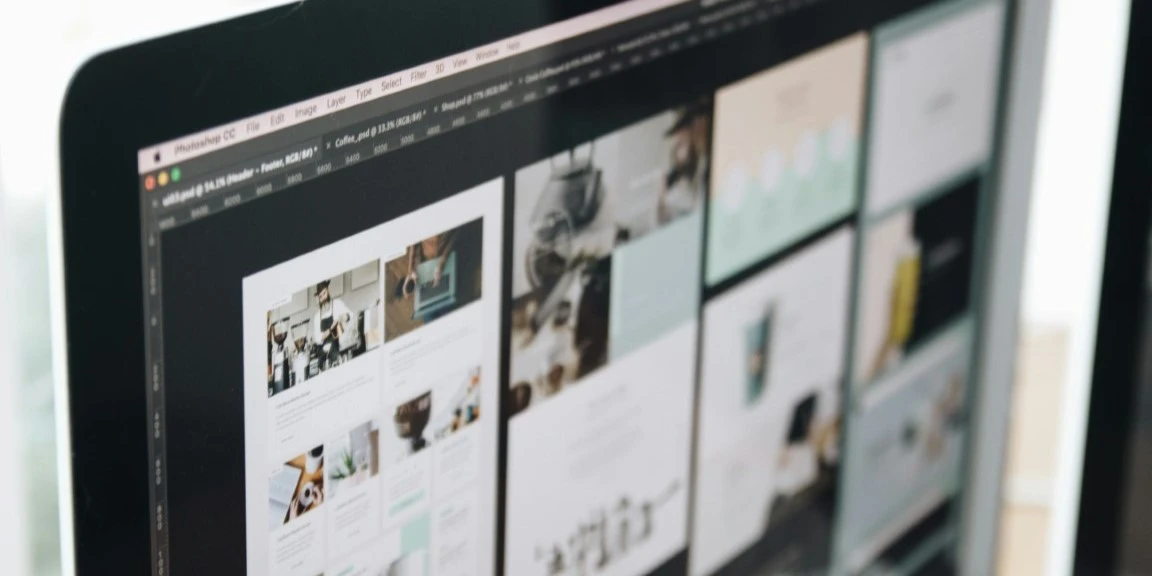In today’s digital world, a website is more than just an online presence—it’s a vital part of a business’s success. Whether you’re running an e-commerce store, a service-based business, or a blog, a well-designed website can significantly impact how your customers perceive you. When we talk about web development, two essential components come into play: Web Design and UI/UX Design. These elements are crucial to building a website that looks great, functions smoothly, and delivers an excellent user experience.
What is Web Design?
Web design involves creating the visual elements and layout of a website. This includes everything from the color scheme, fonts, and images to the structure of each web page. Web design is about making the website not only attractive but also functional and intuitive.
Key Elements of Web Design:
- Layout: The arrangement of content, images, and other elements on a page.
- Color Scheme: Choosing colors that align with your brand and evoke the right emotions.
- Typography: Selecting fonts that are easy to read and fit your brand’s personality.
- Images & Graphics: Using high-quality images and visuals to engage visitors.
- Responsiveness: Ensuring the website works seamlessly on desktops, tablets, and smartphones.
A beautifully designed website can set you apart from your competitors. According to research, 75% of users judge a company’s credibility based on its website design. So, investing in a well-thought-out web design can significantly boost your business’s online presence.d
Understanding UI/UX Design
Now, let’s dive deeper into UI and UX design—two terms that often go hand in hand but have distinct meanings.
What is UI Design?
UI (User Interface) design focuses on the look and functionality of a website’s interactive elements. This includes buttons, forms, menus, and icons that users interact with. The goal of UI design is to make these interactions intuitive and enjoyable.
Key Aspects of UI Design:
- Consistency: Ensuring that elements like buttons and icons follow a consistent style.
- Ease of Use: Designing with simplicity in mind to prevent user confusion.
- Visual Appeal: Making interactive elements visually engaging without overwhelming the user.
What is UX Design?
UX (User Experience) design is all about enhancing the overall experience users have while navigating your website. This involves considering how easy it is for visitors to find information, complete tasks, and achieve their goals. Good UX design ensures a website is user-friendly, accessible, and efficient.
Key Elements of UX Design:
- User Research: Understanding the needs and behaviors of your target audience.
- Wireframing & Prototyping: Planning the structure and flow of a website before development.
- Usability Testing: Getting feedback from real users to identify areas for improvement.
- Load Speed: Ensuring pages load quickly to keep users engaged.
A positive user experience is crucial because, according to statistics, 88% of users are less likely to return to a website after a bad experience. This shows how crucial UX design is to retaining visitors and converting them into customers.
Why Web Design and UI/UX Matter for Your Business
Investing in both web design and UI/UX design is not just about creating a beautiful website—it’s about driving business results. Here’s how these elements can benefit your business:
Improves First Impressions: Your website is often the first interaction a customer has with your brand. A visually appealing and user-friendly design creates a positive impression and builds trust.
Boosts Conversions: A well-designed UI with a smooth UX can guide visitors to take action, whether it’s making a purchase, signing up for a newsletter, or contacting you for more information.
Enhances SEO: Websites that are easy to navigate and responsive rank higher on search engines like Google. Good design practices can improve your search engine optimization (SEO), helping your website attract more organic traffic.
Builds Brand Loyalty: A seamless user experience encourages visitors to come back and recommend your website to others. This can lead to better customer retention and increased brand loyalty.
How to Optimize Your Website’s Design for Success
To ensure your website stands out and delivers a great user experience, consider these practical tips:
- Keep It Simple: Avoid clutter and focus on clean, minimal designs. Simplicity can make your website more effective.
- Focus on Mobile Responsiveness: Over 60% of website traffic comes from mobile devices, so ensure your website looks and works well on smartphones.
- Use High-Quality Images: Invest in professional images or high-quality stock photos to enhance the visual appeal of your website.
- Prioritize Load Speed: Fast websites keep visitors engaged. Compress images, reduce the number of plugins, and leverage caching to improve speed.
- Optimize Navigation: Make sure menus are clear, concise, and easy to use so users can find what they’re looking for quickly.
Final Thoughts
Web development is not just about coding a website; it’s about creating an engaging online experience. By focusing on Web Design, UI, and UX, you can create a website that not only looks fantastic but also functions seamlessly. This will attract visitors, improve user satisfaction, and ultimately help grow your business.
Investing in these areas may require time and resources, but the long-term benefits are worth it. At Technogic Systems, we specialize in creating custom web solutions that combine stunning design with an exceptional user experience. If you’re ready to elevate your online presence, reach out to us today!




